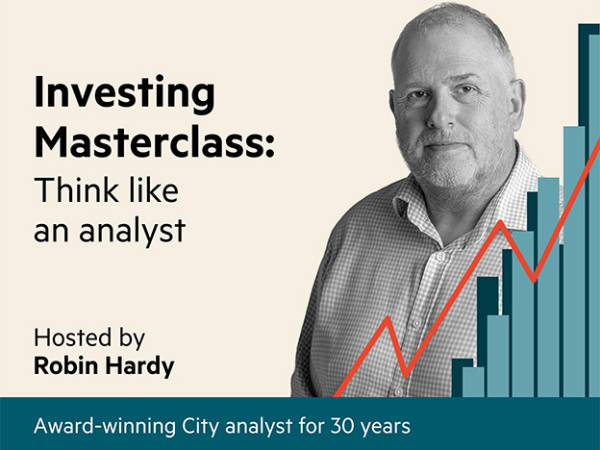- Tailor approach based on age and risk profile
- Diversification is key
- Fees and charges can hit your returns
The start of a new tax year makes it as good a time as any to review your portfolio’s holdings and think about your wider investment strategy and goals. So, get your broom out and let’s dust away the cobwebs that are holding your investing objectives back.
As a long-term investor, it is crucial that you sit down and review your portfolio and situation in detail at least once a year. Why is this so important? Because circumstances – both personal and in the markets – change. This means that you may need to tweak your approach, or at the very least ensure that you are on top of where your money is being invested and that this is the right approach for you.
James Norton, head of financial planners at Vanguard, told Investors’ Chronicle that changes in personal situations, developments in financial markets, and adjustments to the regulatory landscape (such as changes to tax and investment law) mean that investors can’t just sit back and rely on their current investment plans being sufficient.
“Changes in your income or retirement plans, or a financial windfall or setback may mean that you need to adjust your savings goal and your regular contributions into your portfolio,” he said.
Isas, age, and risk
The first thing to ensure is that you are using an appropriate vehicle for your investments. An individual savings account (Isa), which allows you to save and invest tax-free, is a must. You can currently put up to £20,000 per year into a standard Isa.
There are also versions for first-time property purchasers and retirement savers (£4,000 per year can be invested into a lifetime Isa and you will receive a 25 per cent government bonus on contributions) and for parents or guardians getting the ball rolling early for a child (£9,000 per year can be injected into a junior Isa).
Next, make sure you have nailed down what your long-term objectives are, and whether your approach is likely to lead you to success. For example, are you aiming to hit a certain amount for your retirement? Is your investment approach and portfolio helping you towards that goal?
Part of this puzzle depends on your age profile, which impacts how much risk you can take on. If you are a younger investor, you have a much longer horizon to play with and can afford to put your money into higher-risk assets.
This could mean that a much greater percentage of your portfolio sits in equities as you can ride out the ups and downs of the market. If you’re in your mid-20s and holding lots of bonds or the lowest-risk rated funds, it’s definitely time to reassess. You can – depending on which advisor you speak to – quite comfortably hold at least 80 per cent of your investments in equities if you are fortunate enough to be on the youthful side of things.
Even if you are approaching retirement, if you are relying on your pension pot to fund the next few decades, it might not make sense to switch out of equities, although you should probably rebalance to a degree. And bear in mind that now is a pretty awful time to be in fixed income given rising inflation.
The key thing here is to be aware of different asset classes, the risks and rewards as they pertain to your situation, and to diversify your portfolio as appropriate.
Diversification
Diversification is a key investing buzzword, both when it comes to asset classes and to the number of your holdings. You don’t want to concentrate your investments on a limited number of stocks – this could result in disaster if performance isn’t as expected. Rather, you should spread risk across a wider range of investments.
Depending on your risk appetite and age, this could mean investing in an array of individual shares, actively managed funds or in passive funds which track markets and indexes (and so by their nature are diversified). This is much wiser than putting all of your eggs in one – or just a couple of – baskets and tearing your hair out when market volatility leads to inevitable fluctuations in share prices.
So, if your holdings look thin in number this is something that must be addressed.
Buying and selling
As a long-term investor, you should not be frequently buying and selling in the markets. Checking your portfolio several times a day and chasing short-term gains isn’t the path to success for most retail investors.
Think of Warren Buffett’s famous quip that “the stock market is a device for transferring money from the impatient to the patient” next time you are tempted to divest from a stock if it doesn’t deliver immediate gains for you.
If you are happy with a company’s financial fundamentals and valuation, and think its long-term prospects look solid, then avoid the short-term noise and buy and hold for long-term growth.
That being said, there are absolutely situations in which you should sell. It could be worth having a share price in mind at which to sell if a stock falls to that amount, to avoid the trap of holding a consistently declining stock and feeling like it has passed the point of no return to get out of it. That way lies significant capital losses.
But taking prudent decisions to sell individual shares is unlikely to mean a fundamental change in investment strategy for your entire portfolio, unless something has gone seriously wrong with your approach.
Here’s Norton again. “A short-term development like a market crisis or boom, for example, is not usually a good reason to make changes to your strategy. Keep your eyes on your goals and make changes when you’re confident that these will help you reach them.”
Is your platform right for you?
A common area in which investors take a hit to their investing prospects is when it comes to account and transaction fees. It is easy for eyes to glaze over when looking at the small print detailing the management fees, share dealing fees, and various other charges that brokers and investment platforms take.
But if you aren’t careful this can take a significant chunk out of the value of your portfolio over the long term. Fees and charges add up to significant amounts over the years and will dilute your gains.
So, as well as looking over your portfolio, do make sure that you are happy with your broker and investment platform. Compare fees across platforms, and don’t be afraid of moving.
What next for markets?
We are living through increasingly volatile times. Rising inflation and rates, the energy crisis, and a likely decline in fiscal stimulus are all having an impact on the outlook for equity markets. Prospects for the next decade looks uncertain, with many analysts predicting that the same level of returns that investors have come to expect from this bull market will not be repeated.
But investors need to keep their eyes on the long term. And perhaps, given that we seem to be emerging from the pandemic and corporate earnings are holding up, we shouldn't be too gloomy.
Of course, you will need to consider what the changing outlook means for your portfolio and adjust accordingly. But at the end of the day, small changes can have a huge positive impact. Taking the steps discussed above and giving your portfolio and investment approach a diligent spring clean is a good place to start.







